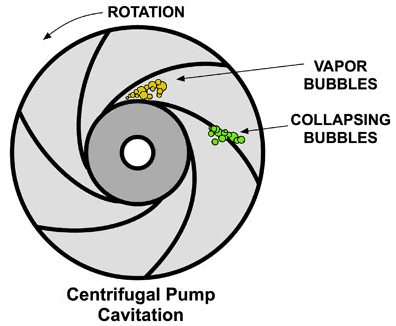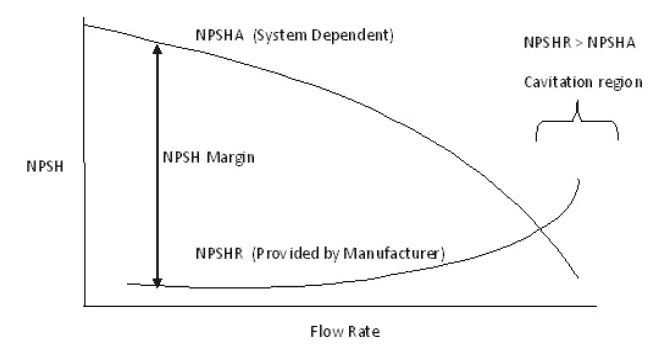Suction Cavitation

Typical causes of suction cavitation:
- Pump is running too far right on the pump curve
- Poor suction conditions (NPSH requirements)
- Blockage in the pipe on suction side
- Inappropriate piping design
- Clogged filters or strainers
To prevent this type of cavitation, the Net Positive Suction Head available (NPSHa) in the system must be higher than the required NPSH of the pump. This problem is typical for suction cavitation and therefore this type of cavitation is also called inadequate NPSHa cavitation.
Besides the change of the pump, problems with suction cavitation can be also solved by:
- Lowering the temperature
- Reduction of motor RPM if possible
- Increase of the diameter of the eye of the impeller
- Use of an impeller inducer.
- Use of two parallel pumps with lower capacity.
- Use of a booster pump to feed the principal pump.
Special case of cavitation occurs at the suction side as a result of inappropriate piping in suction line. Use of restrictions, sharp elbows and other hydraulic equipment can turbulize the flow this can contribute to cavitation formation.
We hope, this article, Suction Cavitation, helps you. If so, give us a like in the sidebar. Main purpose of this website is to help the public to learn some interesting and important information about thermal engineering.

